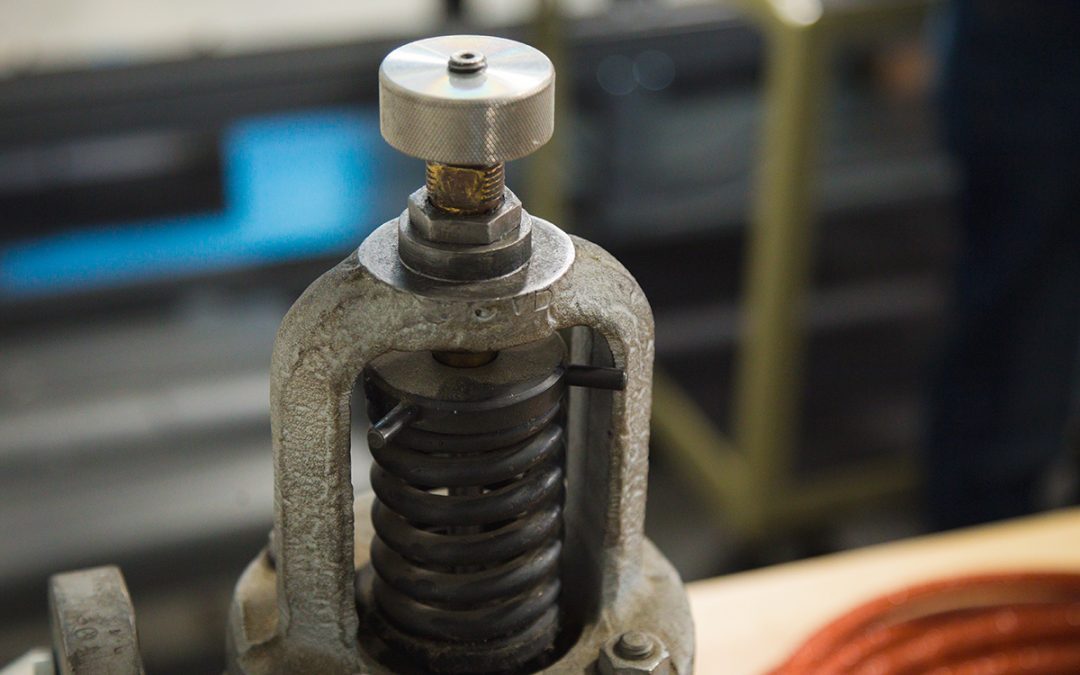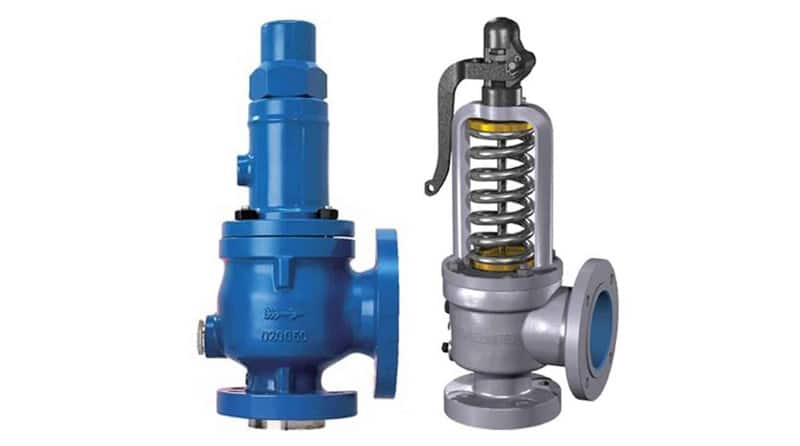Is it Okay to Force a Valve Closed?

Pressure relief valves are integral to the safe, efficient function of many different facilities and production lines. When your pressure relief valves fail, the impact is felt across the facility, as they can disrupt everything from efficiency to safety. One common issue that many valve technicians run into in the field is pressure relief valves that won’t close and whether they should force the valve closed or not.
Valves that won’t close affect the pressure of your entire system, which is a significant concern. With improper system pressure, operations are often brought to a halt. In the event that a valve won’t close, just forcing the valve closed seems like a simple solution, but is it safe? The AccuTEST team is here to answer the question, “is it okay to force a valve closed?”.
Is it Okay to Force a Valve Closed?
No matter the situation, it’s never a good idea to force a valve closed. If a safety or pressure relief valve isn’t closing on its own, it’s either because the system is over pressure and the valve is functioning as it should, or the valve is damaged. A few reasons why you should never force a valve closed include:
- Forcing a valve closed can cause damage. Pushing and holding a valve closed can bend or snap the valve spindle, and in the event that the valve disc is not inline, you can even damage the valve seat.
- Forcing a valve closed is unsafe. There’s a reason your valve isn’t closing. Forcing a valve closed does not solve the problem, it only provides a temporary solution to the symptom. Forcing a valve closed, in addition to damaging the valve, disrupts the valve’s ability to fulfill its purpose, which is relieving pressure when the system is over pressure. If a valve is left alone in a forced-closed position, you’re creating an unsafe pressure system.
So, if it’s not okay to force a valve closed, how do you appropriately address the problem?
What To Do Instead of Forcing a Valve Closed
Forcing a valve closed is never a solution, no matter where you’re working or what kind of valve you’re evaluating. Safety relief valves keep facilities safe by relieving pressure. When a valve is forced closed, it is unable to perform that task.
Instead of forcing a valve closed, first isolate the valve to determine what the root issue is. Diverting pressure to an active relief valve will help you isolate the valve so you can figure out what the problem is.
As mentioned above, there are a number of reasons a valve may not be closing, and it’s important to verify that the system — rather than the valve — is not the issue before you move on to the next steps.
If you are able to verify that the valve is the problem, replace the valve, rather than forcing it closed. This will get the system back up and running as quickly as possible while helping ensure that the facility remains safe.
With a solution at hand, you may be interested to learn more about why that safety relief valve wouldn’t close in the first place. Here’s what you need to know about the signs of pressure relief valve failure, why safety relief valves remain open, and what causes them to malfunction.
Understand Why Your Safety Relief Valve Won’t Close
The most common causes of a valve that’s hanging open can be broken into two categories — damage that occurred before you or your technicians arrived, and damage that occurred during the testing process.
If you haven’t yet tested the valve, but it won’t close
- The system may be overpressure. The function of a safety relief valve is to relieve pressure when the system is pressurized above its set point. If you’re noticing a valve that won’t close, your first step should always be to check the pressure of your system.
- The valve’s setpoint could be wrong. Another common issue with a safety relief valve that won’t close is a low setpoint. If the valve’s set point is set too low, it will open even when the system isn’t overpressure.
- The valve is broken. If the valve’s setpoint is correct, the system is at the right pressure, and the valve still won’t close on its own, there’s likely an issue with the valve itself. Maybe the valve is damaged, or maybe there’s debris in the valve seat. Either way, the valve is the issue and should be examined and likely replaced.
If you’ve already tested the valve, and now it won’t close
If a valve remains open after you test it, it’s likely that the testing itself could have damaged the valve. Sometimes, valves are accidentally tested at the wrong pressure, which can damage them, but a pop test is the most common reason that a valve is damaged during testing.
What is a Pop Test?
Pop tests are performed on safety relief valves. The idea behind a pop test is similar to regular pressure relief valve testing, except that where most inline valve testing systems work to record just the point where a valve begins to lift from the seat, a pop test forces the valve to open completely.
How Can Pop Tests Damage Safety Valves?
There are pros and cons to pop tests, but the biggest issue with them is that they can often damage valves. Because pop tests force valves to open completely, and often at higher pressures, they can cause a number of issues, from damage to the valve spring to seat alignment.
While pop tests completed off-site to verify valve settings are common, safety valve technicians know that on-site pop tests are not ideal. Inline valve testing verifies that valves are working properly in the system, and should be completed in a way that leaves the valve in the best possible condition.
How Can You Test A Pressure Relief Valve Without Damaging It?
The best way to avoid damaging a pressure relief valve during testing is to use an inline safety relief valve testing system that gradually opens a valve, rather than forcing it to open or “pop” all at once.
Equipment like the AccuTEST system gently increases pressure just until the valve begins to lift from the seat. This works to verify that the valve is functioning as it should, without damaging the spring or the disc. When the test is complete, the valve is still able to close and functions just as it would normally.
While it’s never okay to force a pressure or safety relief valve closed, there are many ways to avoid creating hanging valves in the first place. If you’re interested in learning more about inline safety relief valve testing, or you’d like more information about the AccuTEST system, our team is here to help. Give us a call or contact us online today for more information.



